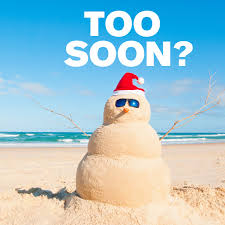
You may have noticed that promotions and marketing for the holidays seem to come earlier and earlier each year. This phenomenon is often referred to as "The Christmas Creep".But it's not just Christmas. No sooner do Christmas offers come down or expire and it's a full-court press for Valentine's Day. Just last week a friend posted on Facebook they were in a store and saw Halloween candy and decorations. That was on July 18th! Halloween is still little over three and half months away. And we haven't even cleared the back-to-school season.Few would dispute that planning for big inline seasonal promotions (like Christmas) should happen months in advance. However, the execution of those marketing campaigns should be in line with current customer behaviors and expectations.Many internet retailers perceive that getting a jump on competitors gives them an advantage. While that maybe be true for the Christmas season, that type of thinking could backfire when it comes to smaller holidays like Valentine's Day, St. Patrick's Day, Mother's Day, Easter, Father's Day and the like.Yes, online marketers are right to want to stand out from the noise of the season. But there is a big difference between standing out and sticking out like a sore thumb. Starting some seasonal promotions too early is akin to wearing a costume to a black tie affair. You'd certainly get noticed, but not necessarily in a good way.Here are a few things to consider when planning the timing of seasonal promotions for any holiday:
What’s Too Early?
For big holidays (such as Christmas) studies should that many consumer begin shopping as early as Labor Day. Last year some 34 million people had already started their holiday shopping in early September, according to CreditCards.com and close to one million were already done by that time.Consumers are becoming a little more accustom and slightly less annoyed by early holiday promotions, according to a survey by RichRelevance. Still, more than half of those surveyed (55 percent) said they were annoyed or very annoyed by holiday goods appearing in stores (and online) before Halloween. However, that’s down from 71 percent in 2014.But the same isn't necessarily true for the lesser holidays. Starting promotions too early can lead to consumer fatigue and apathy. It can also lead to a boycott or some negative backlash.
Urgency
Understanding the psychology behind what drives customer purchasing behavior is imperative. Starting too early means there's no sense of urgency. And urgency is often a big psychological driver for online purchases. Urgency is often equated with scarcity. And when people think there are a limited number of items or a limited time to get the discount, they will buy for fear of missing out. FOMO is real and can motivate shoppers to buy.Creating a sense of urgency through scarcity is a proven motivator for shoppers. Research has proven that people derive more satisfaction from avoiding a loss (missing a sale) than from achieving a gain of equivalent value. So, adding a limited duration to the offer can create a sense of urgency among visitors and encourage them to buy immediately. For example, "Get 40 percent off on all products for next 2 days", compels shoppers to act right away.
Email Overload
If email is one of your main methods for pushing out promotions, consider that consumers experience a dramatic increase in email during holiday periods. That can lead consumers to ignore a sale email and then think they will come back to it later if it requires them to take action (like redeem a coupon or browse sale items). Often they don't.That is especially true of those receiving an email on January 2nd about a Valentine's Day sale (more than a more and half away). That's hardly urgent and more likely to be ignored.According to Fronetics, "In almost every respect, non-holiday emails outperformed holiday emails in a significant way. Open rates during the holidays were 18.8 percent lower than during non-holidays. Mean click-through rates differed by 28 percent."Fronetics attributes this to the fact that the volume of emails sent during this period increased significantly. You would expect that special holiday offers would entice recipients to click through more often. But increased email volume seemed to detract from such motivating offers.
Conflicting Messages
Media that targets mass consumers (think early morning news and chat shows, magazines geared towards moms, etc.) often have pieces about "how to save big for X holiday". Some of the advice includes waiting until the last minute to get the best deal. These so-called consumer experts or online shopping experts often tout the idea that the very best bargains take place closer to the actual holiday or even after the holiday is over. The gist is that online retailers will be desperate to dump their stock and offer even steeper discounts.So on one hand, consumers are being advised to wait (which appeals to the procrastinator in many consumers). On the other hand, etailers want them to buy. Those messages are in direct conflict. To combat the issue, internet retailers may want to take a measured approach and promote the fact that they will be having a big sale on specific dates. That lets them promote the sale and give consumers a heads up as to what they can expect.There is no magic formula for timing as each holiday has it’s own rituals and significance. But keeping the consumer's expectations and behavior in the forefront when planning the timing for holiday campaigns will likely give you a leg up.










